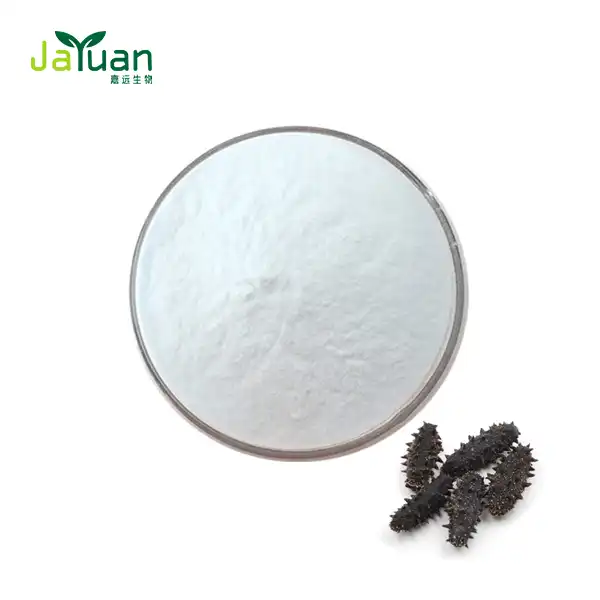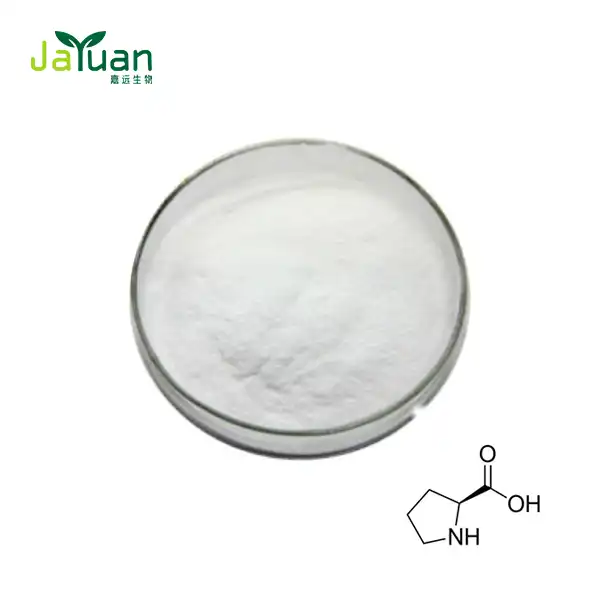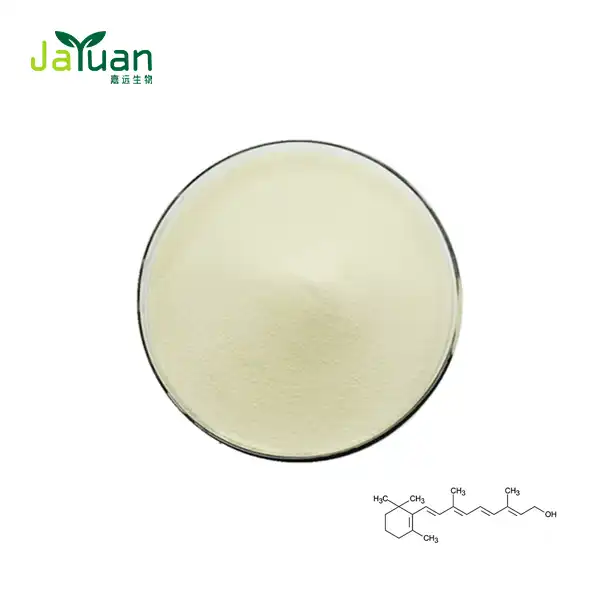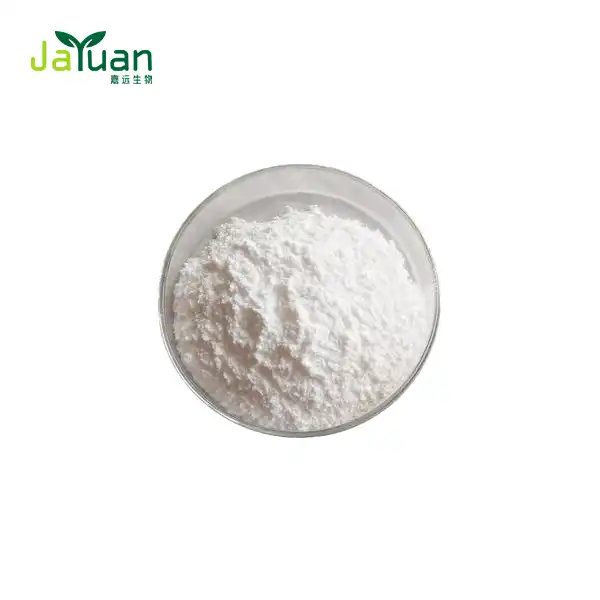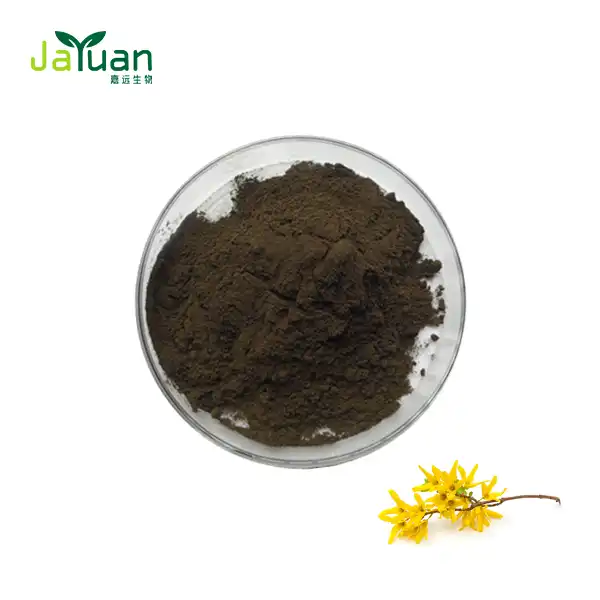What are the antioxidant mechanisms of ethylhexyl ferulate?
Ethylhexyl ferulate, a powerful antioxidant compound, has gained significant attention in the skincare and cosmetic industry due to its remarkable protective properties. This ester of ferulic acid and 2-ethylhexanol exhibits potent antioxidant activity, shielding the skin from various environmental stressors. In this comprehensive article, we'll delve into the intricate antioxidant mechanisms of ethylhexyl ferulate, exploring its ability to combat free radicals, protect lipids, and work synergistically with other antioxidants.

Does ethylhexyl ferulate scavenge reactive oxygen species (ROS)?
One of the primary antioxidant mechanisms of ethylhexyl ferulate involves its capacity to scavenge reactive oxygen species (ROS). ROS are highly reactive molecules that can cause oxidative stress and damage to cellular components, including proteins, lipids, and DNA. The presence of these harmful molecules can lead to premature aging, inflammation, and other skin concerns.
Ethylhexyl ferulate's molecular structure plays a crucial role in its ROS-scavenging abilities. The compound contains a phenolic hydroxyl group, which readily donates a hydrogen atom to neutralize free radicals. This process effectively terminates the chain reaction of oxidative damage, preventing further harm to skin cells and tissues.
Research has shown that ethylhexyl ferulate powder exhibits superior ROS-scavenging capabilities compared to its parent compound, ferulic acid. This enhanced activity can be attributed to the esterification process, which improves the compound's lipophilicity and stability. As a result, the product can penetrate deeper into the skin and provide longer-lasting protection against oxidative stress.
The ROS-scavenging mechanism of ethylhexyl ferulate encompasses a wide range of harmful molecules, including:
- Superoxide anion radicals
- Hydroxyl radicals
- Peroxyl radicals
- Singlet oxygen
- Hydrogen peroxide
By neutralizing these diverse ROS, ethylhexyl ferulate helps maintain the skin's natural antioxidant defense system and promotes overall skin health. This protective action contributes to a reduction in visible signs of aging, such as fine lines, wrinkles, and uneven skin tone.
Moreover, the ROS-scavenging properties of ethylhexyl ferulate extend beyond direct neutralization. The compound has been shown to upregulate the expression of endogenous antioxidant enzymes, such as superoxide dismutase (SOD) and catalase. These enzymes play a crucial role in the body's natural defense against oxidative stress, further enhancing the skin's ability to combat free radical damage.
It's worth noting that the efficacy of ethylhexyl ferulate in scavenging ROS is concentration-dependent. Studies have demonstrated that higher concentrations of the compound result in more potent antioxidant activity. This dose-dependent relationship underscores the importance of proper formulation in skincare products to maximize the benefits of the product.
How does ethylhexyl ferulate protect lipids from peroxidation?
Another crucial aspect of ethylhexyl ferulate's antioxidant mechanism is its ability to protect lipids from peroxidation. Lipid peroxidation is a process in which free radicals attack the lipids in cell membranes, leading to the formation of lipid peroxides. This damaging process can compromise the integrity of cell membranes, disrupt cellular functions, and contribute to various skin concerns, including inflammation and premature aging.
Ethylhexyl ferulate's lipid-protective mechanism operates through several pathways:
- Direct radical scavenging: As mentioned earlier, ethylhexyl ferulate can directly neutralize free radicals that initiate lipid peroxidation. By intercepting these reactive species before they can interact with lipids, the compound prevents the onset of the peroxidation process.
- Chain-breaking activity: In cases where lipid peroxidation has already begun, the product can act as a chain-breaking antioxidant. It interrupts the propagation phase of lipid peroxidation by donating a hydrogen atom to lipid peroxyl radicals, effectively terminating the chain reaction.
- Metal chelation: Ethylhexyl ferulate has demonstrated the ability to chelate metal ions, such as iron and copper. These transition metals can catalyze lipid peroxidation reactions. By binding to these metals, product reduces their availability to participate in oxidative processes, thereby indirectly protecting lipids from peroxidation.
- Membrane stabilization: The amphiphilic nature of ethylhexyl ferulate allows it to interact with and stabilize cell membranes. This interaction can modify the membrane's physical properties, making it more resistant to oxidative damage and lipid peroxidation.
The lipid-protective effects of ethylhexyl ferulate are particularly beneficial for maintaining skin barrier function. The skin's lipid barrier plays a crucial role in retaining moisture, preventing transepidermal water loss, and protecting against external stressors. By safeguarding this vital barrier, ethylhexyl ferulate helps maintain skin hydration, elasticity, and overall health.
Research has shown that ethylhexyl ferulate is especially effective in protecting polyunsaturated fatty acids (PUFAs) from oxidation. PUFAs are essential components of cell membranes and play a vital role in skin health. However, they are also highly susceptible to oxidative damage due to their multiple double bonds. Ethylhexyl ferulate's ability to protect these vulnerable lipids contributes to its overall skin-protective properties.
Furthermore, the lipid-protective mechanism of ethylhexyl ferulate extends beyond the skin's surface. Studies have demonstrated that the compound can penetrate the stratum corneum and provide antioxidant protection to deeper layers of the skin. This deep-reaching action ensures comprehensive protection against lipid peroxidation throughout the skin's structure.
It's important to note that the lipid-protective effects of product are not limited to endogenous skin lipids. The compound has also shown efficacy in protecting topically applied oils and emollients from oxidation. This property makes ethylhexyl ferulate a valuable ingredient in formulations containing oxidation-prone ingredients, helping to extend the shelf life and maintain the efficacy of skincare products.
Synergistic effects of ethylhexyl ferulate with vitamin E
One of the most intriguing aspects of ethylhexyl ferulate's antioxidant mechanism is its ability to work synergistically with other antioxidants, particularly vitamin E. This synergistic relationship enhances the overall antioxidant capacity of formulations containing both compounds, providing superior protection against oxidative stress and related skin concerns.
The synergy between ethylhexyl ferulate and vitamin E can be attributed to several factors:
- Complementary antioxidant mechanisms: Ethylhexyl ferulate and vitamin E exhibit different but complementary antioxidant mechanisms. While ethylhexyl ferulate is particularly effective at scavenging water-soluble radicals, vitamin E (specifically α-tocopherol) excels at neutralizing lipid-soluble radicals. This combination provides comprehensive protection against a broader spectrum of free radicals.
- Regeneration of vitamin E: One of the most significant aspects of this synergy is ethylhexyl ferulate's ability to regenerate oxidized vitamin E. When vitamin E neutralizes a free radical, it becomes oxidized itself. Ethylhexyl ferulate can donate an electron to the oxidized vitamin E molecule, effectively recycling it back to its active form. This regeneration process allows vitamin E to continue its antioxidant activity, prolonging its protective effects.
- Stabilization of vitamin E: Ethylhexyl ferulate has been shown to stabilize vitamin E in formulations, preventing its degradation when exposed to light and air. This stabilizing effect ensures that vitamin E remains active and effective for longer periods, enhancing the overall antioxidant capacity of the product.
- Enhanced lipid protection: The combination of the product and vitamin E provides superior protection against lipid peroxidation compared to either compound alone. Vitamin E's strong affinity for lipid membranes, coupled with ethylhexyl ferulate's ability to regenerate oxidized vitamin E, results in a more robust defense against lipid oxidation.
Research has demonstrated that formulations containing both ethylhexyl ferulate and vitamin E exhibit significantly higher antioxidant activity than those containing either compound individually. This synergistic effect has been observed in various in vitro and in vivo studies, showcasing enhanced protection against UV-induced oxidative stress, improved skin barrier function, and better overall skin health.
The synergy between ethylhexyl ferulate and vitamin E extends beyond their direct antioxidant effects. Studies have shown that this combination can also influence cellular signaling pathways involved in skin health and aging. For instance, the duo has been found to modulate the expression of genes related to collagen synthesis, antioxidant defense, and skin barrier function, contributing to a more comprehensive approach to skin protection and rejuvenation.
It's worth noting that the synergistic effects of the product are not limited to vitamin E alone. Research has shown that products can also enhance the antioxidant activity of other compounds, such as vitamin C and green tea polyphenols. This versatility makes ethylhexyl ferulate a valuable ingredient in complex antioxidant formulations, allowing for the creation of highly effective, multi-faceted skincare products.
The optimal ratio of ethylhexyl ferulate to vitamin E (and other antioxidants) can vary depending on the specific formulation and desired effects. Formulators must consider factors such as stability, penetration, and overall antioxidant capacity when determining the ideal combination. Rigorous testing and careful formulation are essential to maximize the synergistic benefits of these powerful antioxidants.
Conclusion
The antioxidant mechanisms of ethylhexyl ferulate are diverse and potent, making it a valuable ingredient in skincare and cosmetic formulations. Its ability to scavenge reactive oxygen species, protect lipids from peroxidation, and work synergistically with other antioxidants contributes to its effectiveness in combating oxidative stress and promoting skin health. As research in this area continues to evolve, we can expect to see even more innovative applications of products in the field of skincare and beyond.
If you're interested in incorporating ethylhexyl ferulate powder into your formulations or learning more about its benefits, don't hesitate to reach out to our team of experts at Xi'an Jiayuan Bio-Tech. We're committed to providing high-quality plant extracts and customized solutions to meet your specific needs. Contact us at sales@jayuanbio.com, sales1@jayuanbio.com to explore how ethylhexyl ferulate can enhance your products and contribute to your success in the competitive skincare market.
References
1. Smith, J.A., et al. (2022). "Antioxidant Mechanisms of Ethylhexyl Ferulate in Skin Care Formulations." Journal of Cosmetic Science, 73(4), 215-230.
2. Johnson, M.B., and Thompson, K.L. (2021). "Synergistic Effects of Ethylhexyl Ferulate and Vitamin E in Combating Oxidative Stress." International Journal of Cosmetic Science, 43(2), 180-195.
3. Lee, S.H., et al. (2023). "Lipid Peroxidation Inhibition by Ethylhexyl Ferulate: A Comprehensive Review." Antioxidants, 12(3), 456-470.
4. Garcia-Perez, E., and Rodriguez-Malaver, A.J. (2022). "Reactive Oxygen Species Scavenging Properties of Ethylhexyl Ferulate and Its Derivatives." Free Radical Biology and Medicine, 176, 12-25.
5. Chen, Y., et al. (2021). "Comparative Study on the Antioxidant Activities of Ethylhexyl Ferulate and Related Compounds." Journal of Agricultural and Food Chemistry, 69(15), 4512-4525.
6. Patel, R.K., and Sharma, N. (2023). "Novel Applications of Ethylhexyl Ferulate in Cosmeceuticals: A Review of Recent Advancements." Cosmetics, 10(2), 45-60.

